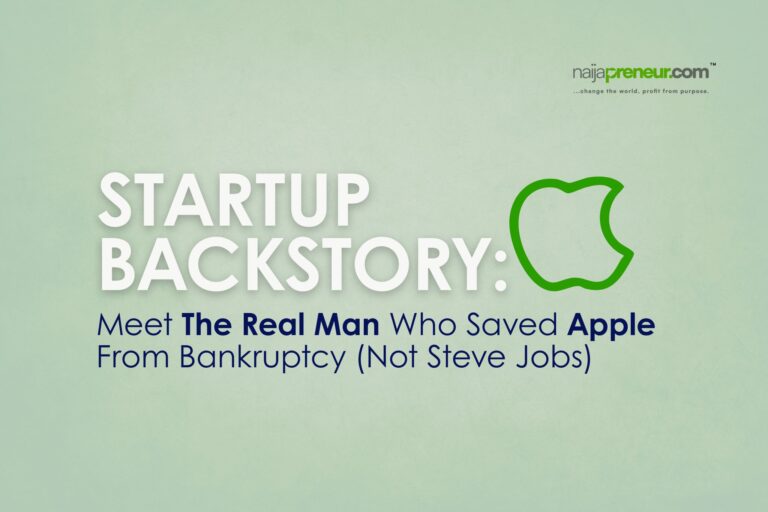When most people talk about Apple’s comeback in the late 1990s, one name dominates the story: Steve Jobs.
Rightly celebrated as a visionary, Jobs reimagined the company’s future and helped create the most valuable brand on Earth. But there’s a lesser-known chapter to Apple’s resurrection—a chapter that doesn’t get the headlines.
Because in 1996, Apple wasn’t just struggling. It was dying.
Apple Was 90 Days From Bankruptcy
By the start of 1996, Apple was in crisis. The company had just posted a staggering $1 billion loss, and its cash reserves were dwindling fast.
During a January 31 board meeting, then-CEO Michael Spindler made a desperate plea: sell the company to Sun Microsystems—at any price. Apple’s board was prepared to pull the plug.
But one man thought differently.
Enter Gil Amelio, a turnaround veteran best known for rescuing National Semiconductor. The board handed him an impossible assignment: save Apple from collapse.
What happened next changed everything.
A Series of Financial Masterstrokes
Within days of taking the helm, Amelio negotiated with Japanese lenders to extend Apple’s credit lines—buying the company six months of life.
Then, in an unprecedented move, he worked with Goldman Sachs to craft a groundbreaking financing deal that injected $661 million into Apple—at a time when no one wanted to touch the company.
Even Steve Jobs, who had not yet returned to leadership, recognized the brilliance. He later told Amelio:
“I certainly couldn’t have done that, and I don’t know of anyone else who could have, other than you. It was one of the more brilliant business maneuvers I’ve ever seen.”
The Rebuilding Begins
Amelio’s work wasn’t just financial. He implemented aggressive cost-cutting, slashing $250 million in expenses per quarter and laying off 3,000 employees. He dismantled Apple’s inefficient internal silos and simplified a chaotic product line that had become nearly impossible for consumers—or even employees—to navigate.
But perhaps his most consequential move came in late 1996: Apple acquired NeXT—the software company founded by Steve Jobs after his ouster from Apple a decade earlier.
This brought two things to Apple:
-
A modern, UNIX-based operating system that became the foundation for macOS.
-
Steve Jobs himself—initially as an advisor.
The Power Struggle Behind the Scenes
What followed was a corporate drama few saw coming.
Jobs quietly began lobbying board members, positioning himself as the future of Apple. He undermined Amelio’s authority and worked to regain control of the company he had co-founded.
By July 1997, just 18 months after saving Apple from financial ruin, Gil Amelio was pushed out—in a boardroom coup orchestrated by Jobs.
The media narrative shifted overnight.
Jobs was hailed as the returning hero. Amelio faded into obscurity.
The Real Lesson: Who Controls the Narrative, Wins
One long-time Apple employee captured the truth best:
“Steve was the surgeon who made the patient healthy… But Amelio was the guy in the MASH tent who kept them alive long enough to get there.”
Both roles were essential. But only one was remembered.
This story is more than Silicon Valley lore—it’s a warning for every founder, executive, and leader:
If someone else writes the story, they become the hero.
Gil Amelio saved Apple—but Steve Jobs told the story.
The Brutal Truth of Modern Leadership
In today’s business world, success alone isn’t enough. You have to own the narrative.
Modern founders know this. That’s why they don’t wait for recognition—they build their platform from day one.
-
Every strategic win becomes a public case study.
-
Every innovation is documented and shared.
-
Every insight adds credibility to their leadership.
They don’t rely on journalists, investors, or PR teams to define their legacy. They define it themselves.
Because in a world where attention is currency, those who shape the narrative shape the future.
Takeaway: Tell Your Story, or Someone Else Will
Gil Amelio’s contribution to Apple’s survival was real, measurable, and monumental. But because he didn’t control the narrative, he became a footnote in someone else’s success.
Whether you’re building a company, leading a team, or navigating a pivot, the lesson is clear:
Don’t just lead. Be seen leading.
Because the story that survives is the one that gets told.

